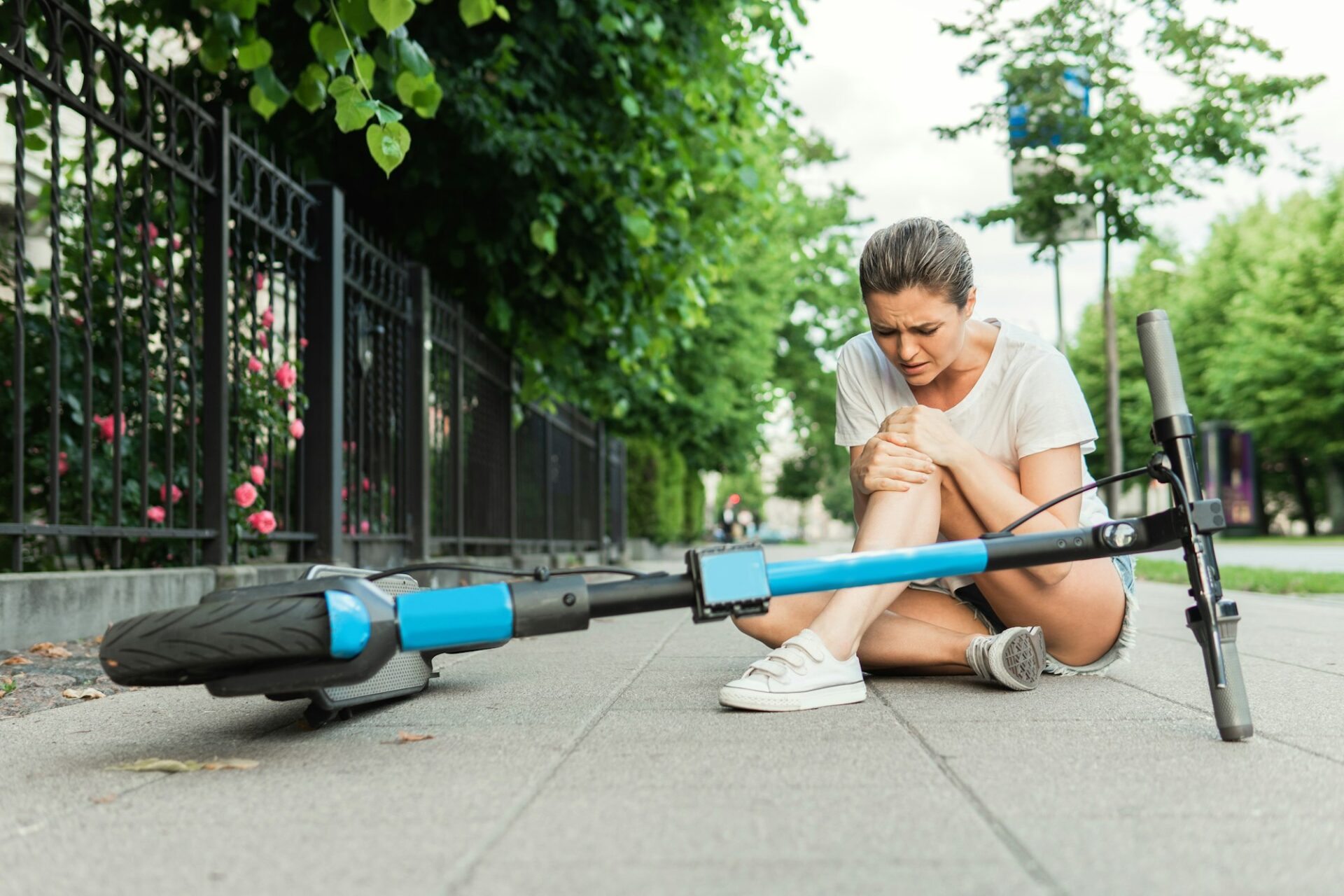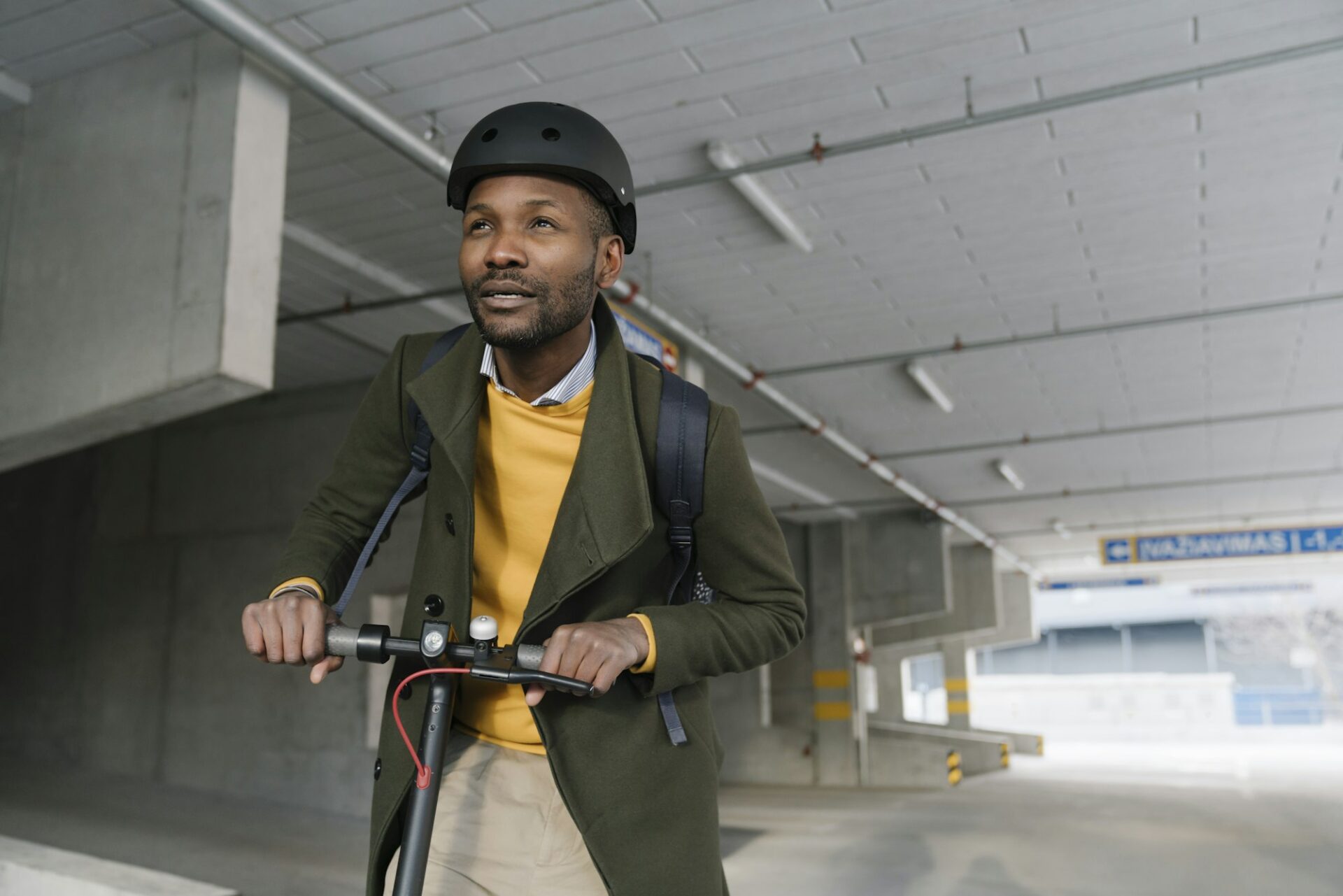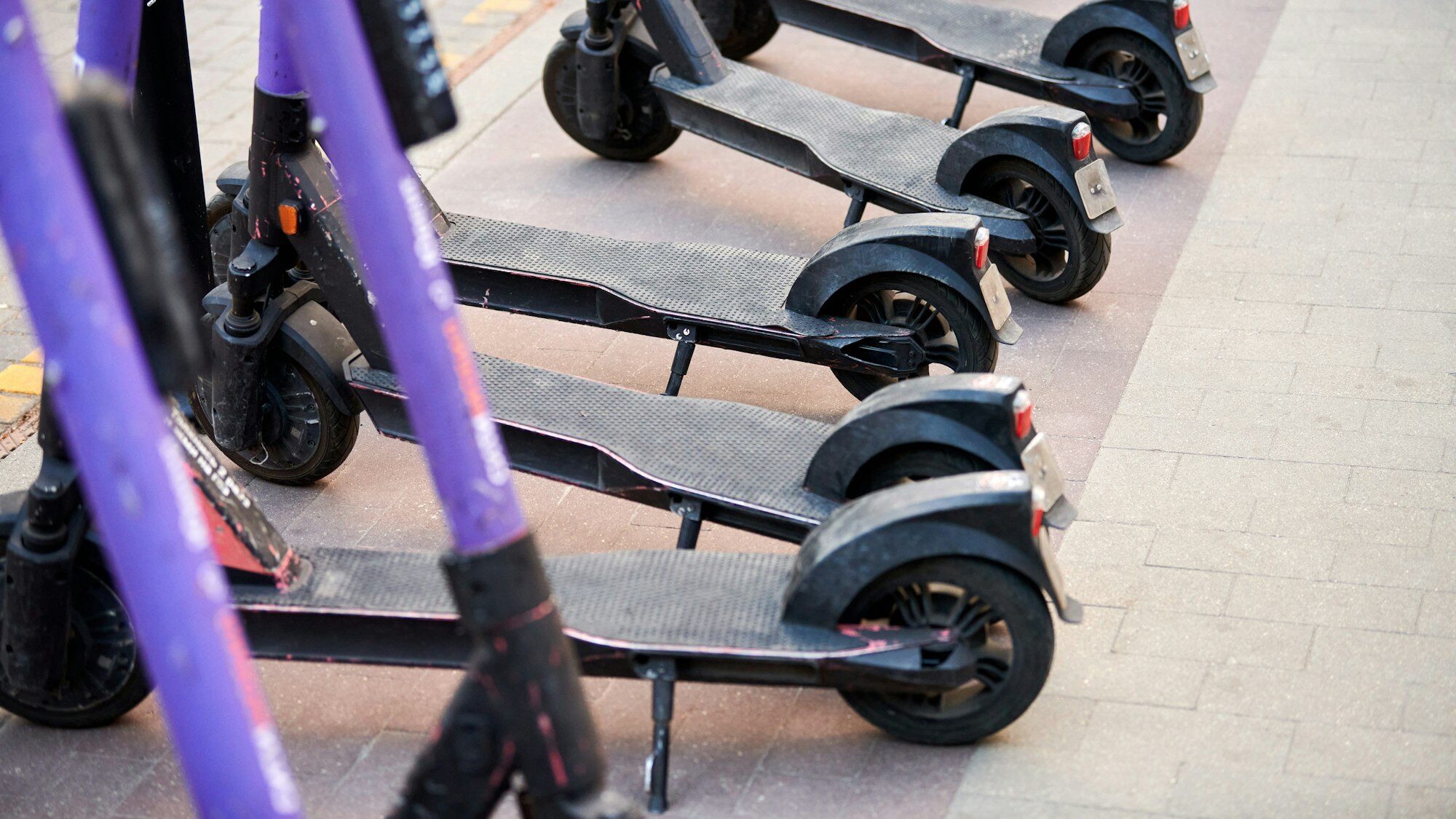Electric scooters have rapidly become a popular mode of urban transport, offering a convenient and eco-friendly alternative for short-distance travel. However, their rise in popularity has also sparked concerns about their safety. From potential risks and common accidents to essential safety tips and regulations, understanding how to navigate electric scooter safety is crucial for both beginners and seasoned e-scooter riders.
In this article, we’ll dive deep into the various aspects of electric scooter safety. By the end, you’ll have a comprehensive understanding of the measures you can take to ride safely, the statistics revealing the potential dangers, and the regulations governing their use.

Understanding the Risks Associated with Electric Scooters
Electric scooters have stormed urban landscapes, offering a convenient and eco-friendly alternative. However, they bring certain risks that e-scooter riders need to be aware of to ensure safety.
Potential Risks
- Maintenance Issues: Poorly maintained e-scooters can lead to brake failures, battery issues, and other mechanical problems that raise the risk of accidents.
- Road Conditions: Wet, icy, or uneven surfaces can cause e-scooters to slip, making riding hazardous, especially at higher speeds.
- Visibility and Awareness: Low visibility conditions, both during night and in adverse weather, can make it difficult for riders to spot obstacles and for drivers to see scooterists.
- Inexperience: Beginners often lack the necessary skills to handle an electric scooter safely, leading to a higher risk of mishaps.
- Speed: Electric scooters can reach speeds that may be difficult to control, increasing the chance of collisions and falls.
Common Electric Scooter Accidents
Knowing the types of accidents that frequently occur with electric scooters can help e-scooter riders take preventive measures:
- Collisions: Crashes involving bicycles, cars, or other e-scooters, often resulting from not following traffic rules or inadequate signaling.
- Falls: E-scooter riders lose balance due to sudden braking, sharp turns, or uneven road surfaces.
- Over-speeding: Accidents are caused by riding at excessive speeds, particularly in congested or pedestrian-heavy areas.
- Potholes and Debris: Tripping over unseen potholes, debris, or other obstacles on the road.
These risks emphasize the importance of understanding how to ride electric scooters safely and what precautions to take. The following sections will delve into e-scooter safety tips, the latest accident statistics, and essential safety gear to reduce these risks.

Essential Electric Scooter Safety Tips for Riders
Safety is paramount when riding electric scooters. Adhering to a few essential electric scooter safety tips can significantly reduce the risk of accidents and injuries. Whether you’re a beginner or an experienced rider, these guidelines are crucial for safe riding.
Wear Appropriate Safety Gear
- Helmet: Always wear a helmet to protect your head in case of falls or collisions. Many accidents result in traumatic brain injuries that could be prevented with proper helmet use.
- Knee and Elbow Pads: Wear pads to shield your joints from severe impacts and abrasions.
- Reflective Clothing: Attire with reflective elements enhances visibility, especially during nighttime or in low-light conditions, reducing the chances of being unnoticed by motorists.
Understand and Follow Traffic Rules
- Observe Speed Limits: Respect the speed limits applicable to e-scooters. Many regions impose a maximum speed to ensure safety.
- Follow Road Signs: Pay attention to traffic signals and road signs to avoid accidents.
- Use Bike Lanes: Where available, ride in designated bike lanes to avoid the way of larger, faster vehicles.
Regular Maintenance
- Check Brakes: Test your brakes before every ride to ensure they are functioning correctly.
- Tire Inspection: Ensure tires are adequately inflated and check for signs of wear or damage.
- Battery Health: Regularly check the battery level and status to avoid sudden power loss during a ride.
Beginner Safety Tips
- Start Slow: Begin at a slower pace to get accustomed to the scooter’s balance and controls.
- Avoid Busy Areas: Practice in less crowded spaces until you gain confidence and skill.
- Get Training: Consider taking a e-scooter safety course specifically designed for electric scooter riders.
Plan Safe Routes
- Avoid High-Traffic Roads: Choose routes with less vehicular traffic to minimize interaction with larger vehicles.
- Use Pathways: Opt for pathways or parks where scooters are allowed, reducing the risk of accidents.
- Check Weather Conditions: Avoid riding in adverse weather conditions that can make roads slippery and visibility poor.
By following these safety tips for riding electric scooters, riders can better protect themselves and others. Being proactive and cautious is vital, paving the way for safer scooting experiences. Up next, we’ll examine the statistics related to electric scooter accidents to provide a clearer picture of the associated risks.

Electric Scooter Accidents Statistics: What the Numbers Say
To understand e-scooter safety, we must examine current accident statistics. Numbers and studies reveal key patterns that highlight risks and opportunities for improving scooter safety.
Injury Rates and Types
- Head Injuries: According to recent studies, approximately 30% of scooter accidents result in head injuries. Proper helmet use could prevent many of these.
- Limb Injuries: Injuries to the arms, wrists, and legs are also common, accounting for nearly half of all reported incidents. These often occur due to falls or collisions.
- Emergency Visits: Emergency departments see an increase in visits from electric scooter riders, with over 100,000 injuries reported annually in the United States alone.
Age and Experience Factors
- Young Riders: A significant proportion of injured riders are aged between 18 and 34, suggesting that young adults are at higher risk.
- Inexperienced Riders: Beginners and those unfamiliar with scooter controls contribute significantly to the accident statistics. This underscores the need for effective training and e-scooter safety education.
Time and Location Data
- Peak Accident Times: Most accidents occur during late afternoons and early evenings, coinciding with peak travel hours. Weekends also see a higher number of incidents.
- Urban Areas: Dense urban areas report more accidents attributed to heavy traffic and higher pedestrian interactions.
Common Causes of Accidents
- Collisions with Vehicles: A significant number of accidents involve collisions with cars or trucks, often due to riders not adhering to traffic rules.
- Lost Balance: Many riders lose balance due to sudden stops, sharp turns, or uneven roads, leading to falls.
- Speeding: Exceeding recommended speed limits is a common factor, increasing the likelihood of severe injuries.
Comparative Analysis
- Electric vs. Traditional Scooters: Studies comparing e-scooters to traditional non-motorized scooters show higher injury rates for the former, largely due to speed and increased usage in traffic-dense environments.
- International Data: Global statistics indicate similar trends, with varying regulations impacting safety outcomes. Countries with stringent regulations often report fewer incidents.
These accident statistics highlight the importance of informed and cautious riding. Next, we will discuss the critical role of electric scooter safety gear in minimizing injuries.

The Importance of Electric Scooter Safety Gear
Wearing appropriate electric scooter safety gear can significantly reduce the risk of injury in case of an accident. Safety gear acts as a protective barrier, cushioning impacts and preventing severe injuries.
Helmet: Your First Line of Defense
- Head Protection: Helmets are essential for protecting your head from traumatic brain injuries during falls or collisions. Statistics show that helmets can reduce the risk of head injury by up to 85%.
- Helmet Laws: Many regions have mandatory helmet laws for e-scooter riders, particularly for minors. Always check local regulations and ensure compliance.
Knee and Elbow Pads
- Joint Protection: Knee and elbow pads protect your joints from severe impact and abrasions, reducing the likelihood of fractures and cuts during a fall.
- Comfort and Flexibility: Modern pads are designed to offer both comfort and flexibility, allowing for a full range of motion while providing robust protection.
Wrist Guards
- Prevent Wrist Injuries: Wrist guards help prevent wrist fractures and sprains, which are common in falls as riders instinctively try to break their fall with their hands.
- Durability: Choose wrist guards made of durable materials for long-lasting protection.
Reflective Clothing and Lights
- Enhanced Visibility: Reflective clothing and accessories improve your visibility to motorists, especially in low-light conditions or at night.
- Additional Lights: Consider adding lights to your scooter for enhanced visibility. Front and rear lights are essential for night riding.
Proper Footwear
- Stable Support: Closed-toe shoes with good grip provide stability and protect your feet during a ride.
- Impact Absorption: Some sneakers come with impact-absorbing soles, which can offer extra protection for your feet and ankles.
Full-Body Suits and Jackets
- Abrasion Resistance: Jackets and full-body suits made of abrasion-resistant materials can protect your body from severe scrapes during a fall.
- Weather Protection: These garments also offer protection against adverse weather conditions, keeping you dry and warm.
Equipping yourself with the right safety gear is not just a recommendation but a necessity for reducing the risk of severe injury. Up next, we will explore the various electric scooter regulations and helmet laws that further contribute to rider safety.

Electric Scooter Regulations and Helmet Laws
Regulations play a crucial role in ensuring the safety of e-scooter riders. Different regions have enacted various rules and electric scooter regulations to minimize accidents and promote responsible scooting. Knowing and adhering to these regulations is imperative for rider safety.
Speed Limits
- Urban Areas: Many cities set a maximum speed limit for electric scooters, typically ranging from 10 to 15 mph (16 to 24 km/h). Exceeding these limits can result in fines and increase the risk of accidents.
- Shared Spaces: Lower speed limits are often mandated in areas with high pedestrian traffic, such as parks and plazas, to prevent collisions and injuries.
Helmet Laws
- Mandatory for Minors: In many jurisdictions, helmets are mandatory for riders under a certain age, often 18 years old. Failure to comply can lead to fines and penalties.
- Recommended for Adults: While some regions do not mandate helmet use for adults, it is strongly recommended to wear one for personal safety.
- Compliance: Helmets must meet specific safety standards, such as those set by the Consumer Product Safety Commission (CPSC) in the U.S.
Licensing and Permits
- Licensing Requirements: Some regions require special licenses or permits to operate electric scooters, ensuring that riders know traffic rules and safe practices.
- Operational Zones: Licensing may also dictate where scooters can be operated, often restricting them from highways and major roads.
Usage Restrictions
- Prohibited Areas: Electric scooters are often banned from sidewalks to protect pedestrians. Riders must use bike lanes or roads where permitted.
- Hour Restrictions: Some cities restrict scooter usage during certain hours, typically late at night, to reduce accidents and noise disturbances.
Maintenance and Safety Checks
- Regular Inspections: Authorities may require scooter-sharing companies to perform regular maintenance and safety checks to ensure their fleet is in good working condition.
- User Responsibility: Riders are encouraged to perform basic pre-ride checks, such as testing brakes and lights, to ensure their scooter is safe to use.
Scooter Sharing Programs
- Program Regulations: Scooter-sharing programs must comply with local regulations regarding fleet size, operating zones, and user safety measures.
- Education Programs: Some regions require scooter-sharing companies to provide new users with educational materials or training sessions.
Understanding these regulations and helmet laws is essential for ensuring a safe riding experience. Compliance not only helps in avoiding fines but also significantly reduces the risk of accidents and injuries. In the next section, we will draw conclusions on whether electric scooters are safe based on the information we have discussed.
Conclusions: Are Electric Scooters Safe?
The question of whether electric scooters are safe does not have a straightforward answer. Their safety largely depends on several factors, including user behavior, adherence to safety guidelines, and the regulatory environment.
Key Takeaways
- Risks and Challenges: As discussed, electric scooters pose various risks, such as maintenance issues, challenging road conditions, and the inherent dangers linked to high speeds. Awareness of these risks is crucial for mitigating them.
- Safety Tips and Gear: Following essential electric scooter safety tips and using appropriate safety gear can dramatically reduce the likelihood of accidents and injuries. Helmets, knee and elbow pads, and reflective clothing are key protective measures.
- Accident Statistics: Data shows a significant number of injuries related to electric scooters, including head and limb injuries. However, these numbers also underscore the importance of preventative measures, such as improved rider training and stricter adherence to safety protocols.
- Regulatory Measures: Electric scooter regulations and helmet laws vary by region but generally aim to enhance safety. Compliance with these rules is vital for reducing accidents and promoting responsible riding.
Balancing Convenience and Safety
Electric scooters offer unmatched convenience and can significantly ease urban commuting. However, balancing this convenience with safety measures is paramount. Riders should be educated about the potential risks and the steps they can take to mitigate them. Regular maintenance and understanding how to ride electric scooters safely are equally important in ensuring a safe riding experience.
Future Outlook
The future of electric scooter safety looks promising, with ongoing innovations in electric scooter safety features and more comprehensive safety studies being conducted. Advances such as improved stability, better braking systems, and enhanced lighting can contribute to safer rides. Enhanced regulations and rider education programs will continue to play a crucial role in reducing accidents and injuries.
So, are electric scooters safe? Assuming that riders are well-informed, cautious, and comply with both safety tips and regulatory measures. With the right approach, the risks can be significantly minimized, making electric scooters a safe and effective mode of urban transportation.